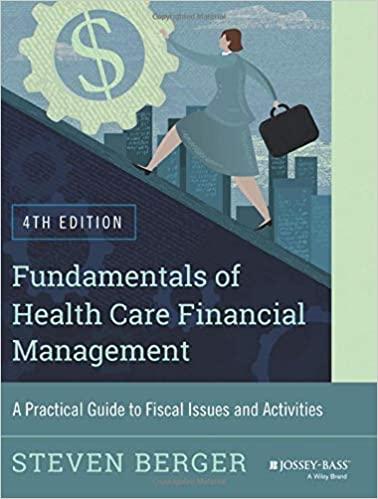Question
Is there a limit to the amount of interest that you can get? Consider the case of investing $1 at 100% interest for 1 year.
Is there a limit to the amount of interest that you can get? Consider the case of investing $1 at 100% interest for 1 year. Your interest calculation is $1 if the interest is computed at the end of the year (simple interest). Thus, you now have $2.00. If the interest is calculated twice in the year, your interest rate is 50% per interest period. After the first 6 months, you will have $1.50. At the end of the year, you will have another $0.75 in interest. Thus, you now have $2.25. What if we continue this process for interest computed quarterly? monthly? weekly? daily? every second? Is there a limit to how much this interest can rise? Calculate the actual value of interest for these cases by using the I = P x (1 + i)n formula. In this formula, i is the interest rate per period and n is the total number of interest periods in the year. What are the amounts at the end of the year for these different cases? There is a limit to the final amount as the number of compounding periods increases without bounds. The final amount A is given by the formula A = P x ert where P is the initial principle, r is the yearly interest rate, t is the number of years (in our example t was 1), and e is a constant which is approximately 2.71828. This amount A is calculated for what is called continuous interest.
Obviously, your bank is not going to give you 100% interest. Now repeat the above calculations for the total amount given interest calculated yearly, twice a year, quarterly, monthly, weekly, and daily using a realistic principle value P and yearly interest rate. Also find the continuous interest amount A.
When your bank does calculate interest, how often do they calculate it in a year? Suppose all interest would need to be calculated either with the simple interest formula, compound interest formula, or continuous interest formula. Keeping in mind all of the situations in life where you have received interest (e.g., bank savings accounts) or have had to pay interest (e.g., loans, credit cards), which would you prefer to use?
Step by Step Solution
There are 3 Steps involved in it
Step: 1

Get Instant Access to Expert-Tailored Solutions
See step-by-step solutions with expert insights and AI powered tools for academic success
Step: 2

Step: 3

Ace Your Homework with AI
Get the answers you need in no time with our AI-driven, step-by-step assistance
Get Started


